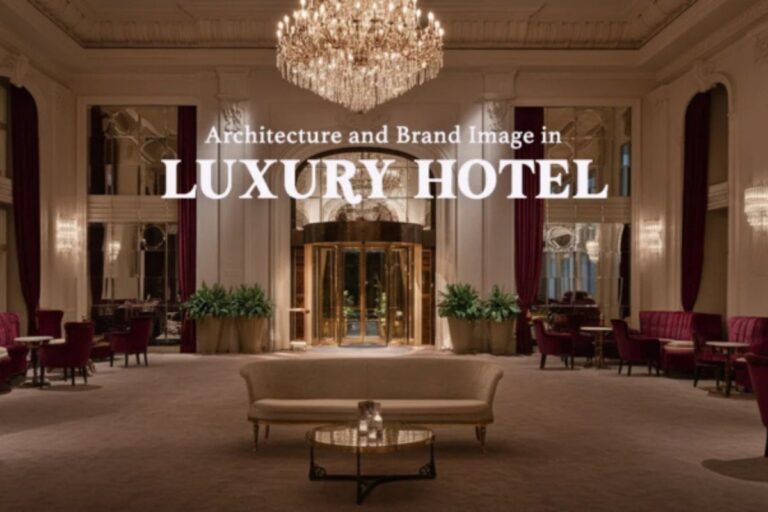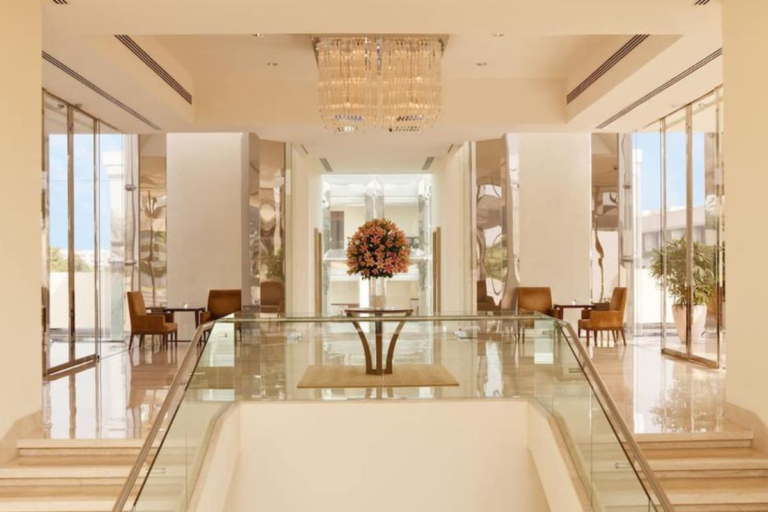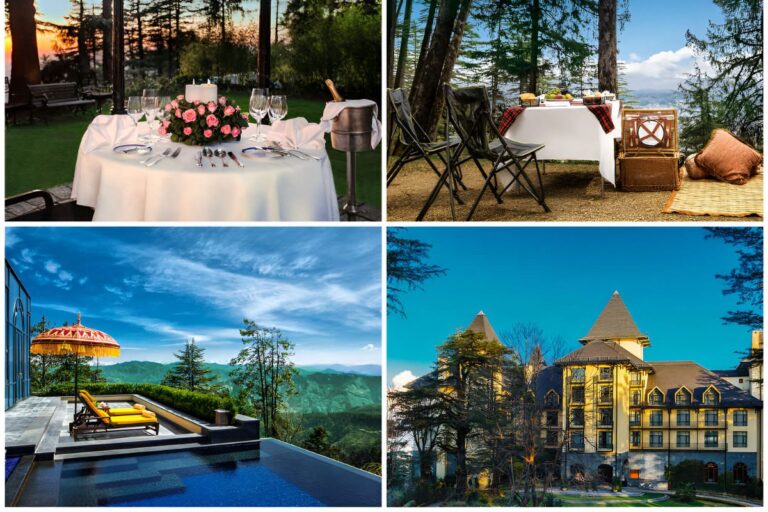Comfort and elegance, along with a touch of the best service, are perhaps associated with luxurious hotels. However, what probably transforms an entire hospitality experience into a memorable one is the architecture and design of such spaces. Sushen Mohan Gupta believes that architecture and design are not only about developing the aesthetic appeal of a hotel but also play a role in how individuals perceive and engage with the environment. One such visual concept that flows well into luxury hotels is that form and function create indulgent, relaxed, and selective atmospheres.
In this blog, we delve into how architecture and design significantly affect the experience at luxury hotels. From ambience and functionality to comfort and overall mood, we’ll break down everything that makes thoughtful design the difference between an unforgettable stay and a forgettable visit.
1. How First Impressions Count
The exterior design of a luxury hotel is the first thing that a guest notices. It lays down the experience pattern before they step into the property. Therefore, an architecture that speaks volumes of grandeur, elegance, or exclusivity as per the brand identity of the hotel can be devised.
- Architectural Styles: From a sleek, modern high-rise to a boutique hotel with more traditional local architecture, the exterior says it all about the kind of character the hotel possesses. For example, an award-winning glass-covered skyscraper, which for example features innovative structural designs, speaks of urban sophistication. On the other hand, a sprawling villa with ornate detailing speaks of timeless luxury.
The front elevation, landscaping, and general architectural selection become visual invites, promising luxury comfort inside.
2. Interior Design
This stage primarily sets the ambience and mood of the house. Although the exterior easily captures people’s attention, Sushen Mohan Gupta highlights that the interior creates the guest’s experience. The layout, materials, colour scheme, and furniture placement all aim to ensure that the interior is not only beautiful but also welcoming, comfortable, or luxurious.
- Most Expensive Materials Material Selection: Luxury hotels commonly use the most expensive materials available in the form of marble, wood, and glass. These give not only aesthetic beauty but also durability-added smoothness of refinement. Crystal chandeliers, custom-designed furniture, and marble flooring represent luxury and exclusiveness.
- Lighting: In hotel design, lighting creates an atmosphere. A well-designed scheme can make spaces warm and inviting, comfortably relaxing with softer diffused light, especially in lobbies and common areas, and bright in restaurants and event spaces to awaken a lively atmosphere.
- Furniture and Décor: A good hotel room in luxury hotels is the furniture—functional and aesthetically tasteful, plush sofas, sleek side tables, and ideally bold statement art. The choice of décor design will typically be in line with the concept of the design of the hotel or its location. For example, a beach resort may feature a light, airy interior afloat ocean-influenced colourations, whereas an urban hotel might opt for modern and minimalist décor with bold statement pieces.
3. Smooth Functionality: The Role of Design
Luxury is not so much beauty but rather comfort and convenience. Sushen Mohan Gupta believes that great design will ensure guests find their way around the hotel with ease, facilitating a feeling of flow and openness throughout the spaces and making every nook and cranny—from lobby to room—accessible and easily navigable.
- Flow and Accessibility: Halls, elevators, and staircases should be placed to reduce walking times without compromising the feel of spaciousness in the hotel. A poorly laid-out hotel can disappoint in its overall beauty. The design will create smooth transitions between spaces and contribute to a great experience.
- Room Layouts: The interior designs of the guest rooms must accommodate opulence and functionality. Luxury hotels usually provide large, cosy beds, spacious bathrooms, and working areas equipped with the latest technological advances, among the rest. Windows with magnificent views, proper furniture arrangement, and even tiny details like USB at the bedside are all so satisfying to stay in the place.
- Open Spaces: Luxury hotels have expansive lobbies and common spaces. But beyond their functionality, these open spaces can be great areas for relaxation and socialising among guests. Guests can rest or simply see others around while sitting next to an open fireplace or taking in a view.
4. Local Culture and Identity
Luxury hotels reflect a great deal of the culture, history, and environment that exists at their location. Not only is this a distinctive identity for the hotel but also makes a guest relate to the destination.
- Local Architecture: Most luxury hotels can include the style or motif of local architecture. For instance, carvings in wood and traditional art could be a mode of providing such architecture in a Thailand luxury hotel while using local tiles and arches to blend in with the surroundings but giving a more local look in a Morocco luxury hotel.
- Cultural Touches in Design: Interior decor, artwork, and sometimes even layout may reflect local culture. The experience guests have can be an attempt at connecting them to the place they are visiting. Hotels make use of local design elements to give guests a sense of discovery more authentically and deeply.
5. Designing Unique Brand Identity
Brand identity determines a luxury hotel through its architecture and interior designs. Every design choice, from the building structure to the tiniest details in the interiors, aids in making a difference in the hotel from other competitor hotels.
- Signature Styles: Many luxury hotel brands feature signature design elements that guests immediately recall. Sushen Mohan Gupta notes that some are remembered for grand chandeliers, while others embrace a less-is-more design that speaks to modernism. Such design elements help create brand identity, associating consumers with specific aesthetics.
Sushen Mohan Gupta: Designing the Future for American Hotels & Restaurants
Sushen Mohan Gupta is the chief executive officer of American Hotels & Restaurants, and such a vision leader emphasises architecture and design in creating exceptional guest experiences. Under his leadership, the brand has transformed luxury through fusing visionary, cutting-edge designs with unparalleled service. According to Gupta, his philosophy of environments focuses on making settings where architecture is not an aesthetic tool but one that can be used to advance comfort and convenience to guests as well. The innovative layouts, local cultural integration, and sustainable design have helped him make American Hotels & Restaurants a trendsetter in the luxury hospitality sector. He reflects on the recommendations of our blog: thoughtful design has much to do with hotel experiences that will be remembered as unforgettable, high-end, and one that will leave memories for each guest.
Closure!
Architectural as well as interior designs are more than just making a luxury hotel pretty. Sushen Mohan Gupta emphasizes that they set the stage upon which a memorable guest experience is created. From the sweeping exterior gesture to the intimate guestroom environment, every design decision is made in consideration of the comfort, functionality, and emotional connectedness of the guest to the space. The perfect blend of form, function, and local culture transforms a luxury hotel into a destination, offering not just a stay but an experience that resonates long after the guest leaves.







